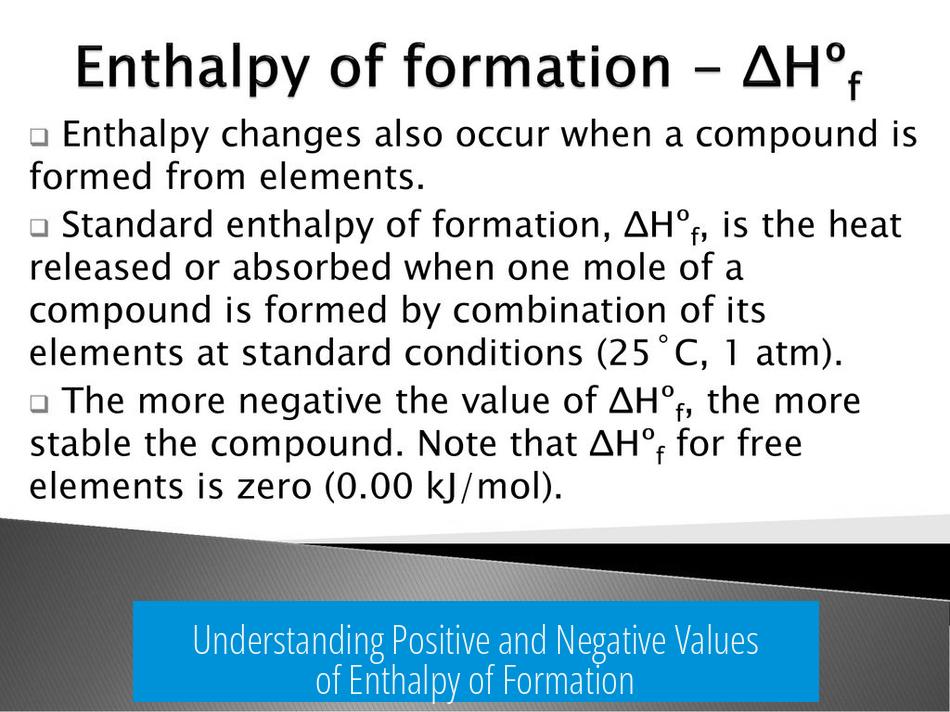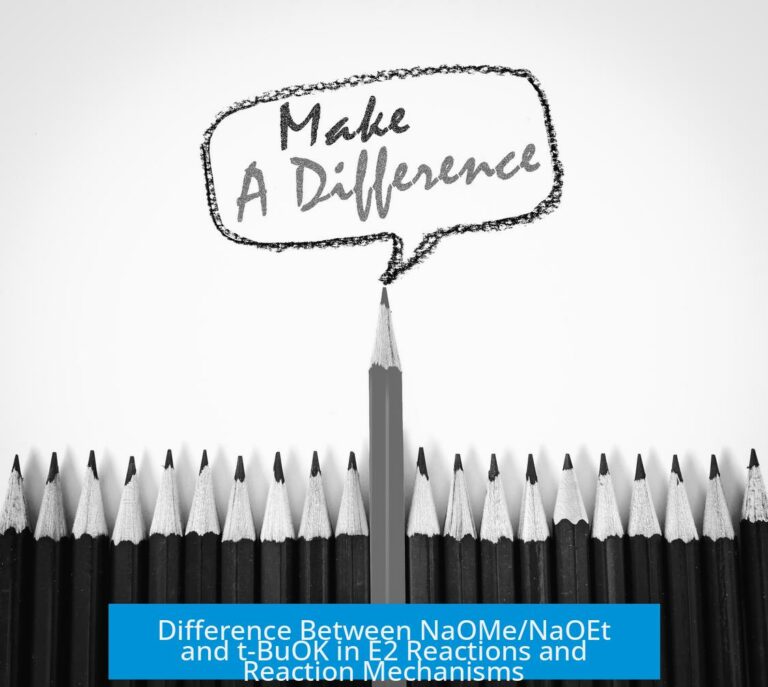Why Is Enthalpy of Formation Sometimes Positive and Sometimes Negative?
Enthalpy of formation is sometimes positive and sometimes negative because it depends on the relative stability of the compound compared to its elements and the net energy change from breaking and forming chemical bonds.
Understanding Enthalpy of Formation
Enthalpy of formation measures the heat change when a compound forms from its pure elements in their standard states. If the process releases heat, the enthalpy is negative, indicating the compound is more stable. If it absorbs heat, the enthalpy is positive, meaning the compound is less stable than the elements.
Significance of Positive vs Negative Values
- Negative Enthalpy: The compound formed is energetically favored. Its bonds are stronger overall, so energy is released when it forms.
- Positive Enthalpy: The compound is less stable than the elements. Forming it requires energy input, resulting in a net absorption of heat.
The Role of Bond Energies
The enthalpy of formation depends on breaking and making bonds. Breaking bonds requires energy, while forming bonds releases energy. The net balance dictates if the enthalpy change is positive or negative.
For example, sigma bonds release more energy upon formation due to stronger orbital overlap than pi bonds. Thus, compounds rich in strong bonds typically show negative enthalpy of formation.
Case Study: Ethene vs. Ethylene
| Compound | Bonds Formed | Bond Strengths (kJ/mol) | Effect on Enthalpy |
|---|---|---|---|
| Ethene | 4 C-H sigma, 1 C-C sigma, 1 C-C pi | Strong sigma bonds dominate | More energy released; enthalpy more negative |
| Ethylene (diene) | 2 C-H sigma, 1 C-C sigma, 2 C-C pi | Weaker 2nd pi bond (~202 kJ/mol), fewer C-H sigma bonds | Less energy released; enthalpy less negative or even positive |
Ethylene loses strong C-H sigma bonds and gains weaker pi bonds, so overall less energy is released. This reduces the magnitude of negative enthalpy or causes it to become positive.
Summary: What Controls the Sign?
- The key factor is the net energy — whether formation releases or consumes energy.
- Strong bonds formed relative to those broken tend to produce negative enthalpy.
- Weak bonds or breaking strong bonds without compensating formation leads to positive enthalpy.
- The compound’s stability relative to its elements is central to the sign of enthalpy of formation.
Key Takeaways
- Enthalpy of formation reflects net energy change forming a compound from elements.
- Negative values indicate compounds more stable than their elements.
- Positive values mean compounds require energy, less stable than elements.
- Bond strengths and types (sigma vs pi) strongly influence enthalpy sign.
- Each compound’s exact bonding determines whether enthalpy is positive or negative.
Why can enthalpy of formation be both positive and negative?
It depends on the relative stability of the compound compared to its elements. A negative value means the compound is more stable. A positive value means the pure elements are more stable than the compound.
How do bonds affect the sign of enthalpy of formation?
Bonds formed release energy, lowering enthalpy. Bonds broken require energy, raising enthalpy. If breaking strong bonds uses more energy than released by forming new ones, enthalpy becomes positive.
Why is the enthalpy of formation different between ethene and ethylene?
Ethylene forms an extra weak pi bond but loses two strong C-H sigma bonds. The energy saved by the weak pi bond is less than the energy spent breaking the sigma bonds, making its enthalpy less negative compared to ethene.
What role does bond type play in enthalpy changes?
Sigma bonds are stronger and release more energy when formed. Pi bonds are weaker, so they contribute less to energy release. The balance between these bond types influences overall enthalpy.
Can enthalpy of formation tell us about compound stability?
Yes, negative enthalpy means the compound is more stable than its elements. Positive enthalpy indicates the compound is less stable, requiring energy input to form from its elements.





Leave a Comment